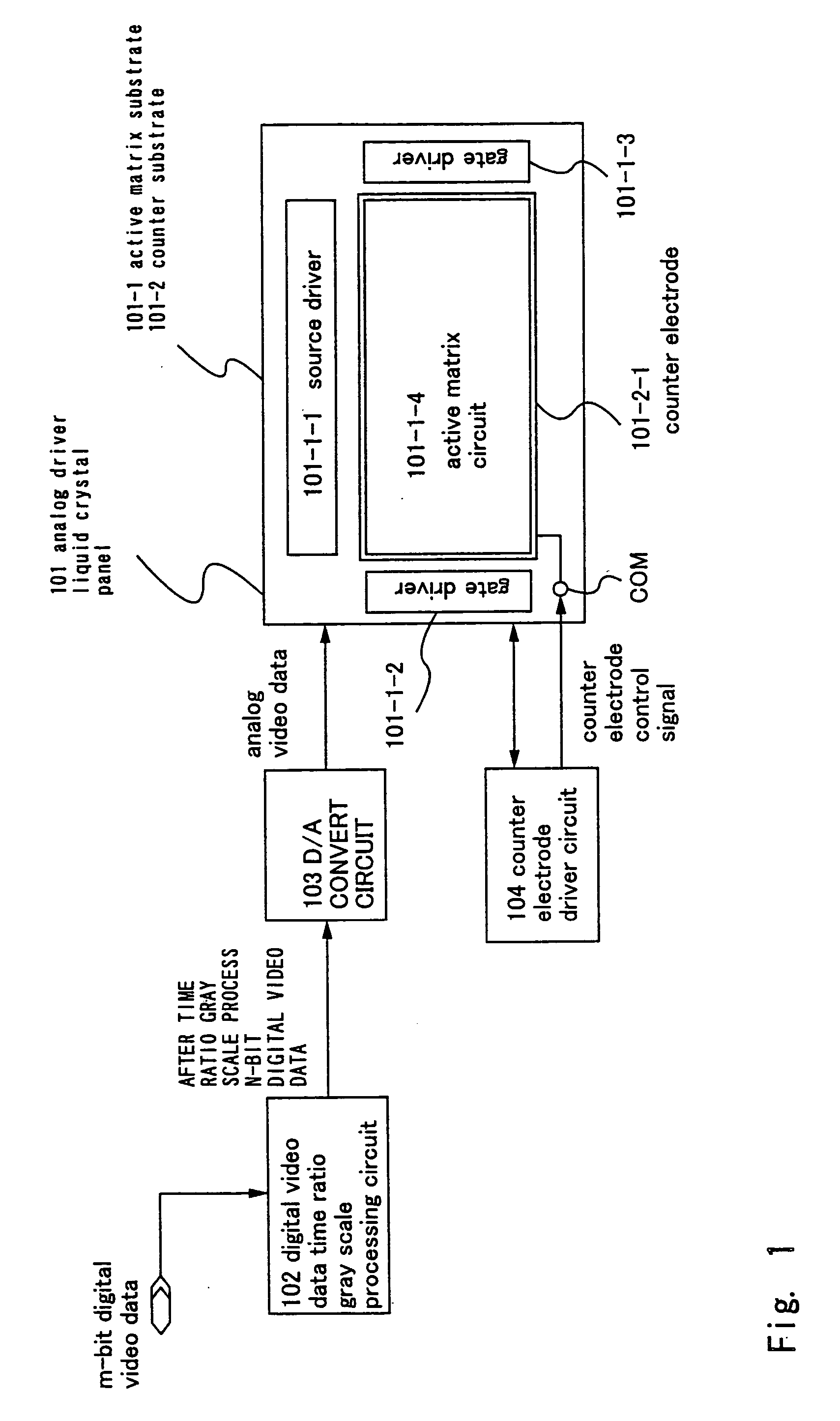Liquid crystal display device
a liquid crystal display and display device technology, applied in the field of liquid crystal display devices, can solve the problems of large driver area, complex circuit construction of d/a converter circuits, and the current stage of digital drivers of active matrix liquid crystal display devices that have not yet reached the stage of being introduced, etc., and achieve high precision, large display, and high resolution
- Summary
- Abstract
- Description
- Claims
- Application Information
AI Technical Summary
Benefits of technology
Problems solved by technology
Method used
Image
Examples
embodiment
[0140] Embodiment Mode 1
[0141]FIG. 4 schematically shows a structural diagram of a liquid crystal display device of this embodiment mode. In this embodiment mode, a liquid crystal display device to which 4 bit digital video data is sent from the external is taken as an example with the intention of simplifying the explanation.
[0142] Shown in FIG. 4 is a schematic structural diagram of a liquid crystal display device according to the present invention. Reference numeral 401 denotes a liquid crystal panel having analog drivers. The liquid crystal panel 401 comprises an active matrix substrate 401-1 and an opposing substrate 401-2. The active matrix substrate 401-1 is comprised of a source driver 401-1-1, gate drivers 401-1-2 and 401-1-3, and an active matrix circuit 401-1-4 with a plurality of pixel TFTs arranged in matrix. The source driver 401-1-1 and the gate drivers 401-1-2 and 401-1-3 drive the active matrix circuit 401-1-4. The opposing substrate 401-2 has an opposing electrode...
embodiment 3
[0202] Embodiment 3
[0203] This embodiment mode employs the structure of the liquid crystal display device of Embodiment Mode 1 where only the first sub-frame term has the initialize term so that the initialize voltage (Vi and VCOM) are applied and the frame inversion driving is conducted.
[0204] Reference is made to FIG. 11. FIG. 11 shows a drive timing chart for the liquid crystal display device of this embodiment mode. The pixel P1,1, the pixel P2,1, the pixel P3,1 and the pixel Py,1 are taken as an example and shown in FIG. 11.
[0205] In this embodiment mode also, as described above, one frame term (Tf) consists of the first sub-frame term (1st Tsf), the second sub-frame term (2nd Tsf), the third sub-frame term (3rd Tsf), and the fourth sub-frame term (4th Tsf). The difference of this embodiment mode from Embodiment Mode 1 resides in that the initialize term (Ti) is placed before the start of the first sub-frame term only, to apply the pixel electrode initialize voltage (Vi) to a...
PUM
 Login to View More
Login to View More Abstract
Description
Claims
Application Information
 Login to View More
Login to View More - R&D
- Intellectual Property
- Life Sciences
- Materials
- Tech Scout
- Unparalleled Data Quality
- Higher Quality Content
- 60% Fewer Hallucinations
Browse by: Latest US Patents, China's latest patents, Technical Efficacy Thesaurus, Application Domain, Technology Topic, Popular Technical Reports.
© 2025 PatSnap. All rights reserved.Legal|Privacy policy|Modern Slavery Act Transparency Statement|Sitemap|About US| Contact US: help@patsnap.com



